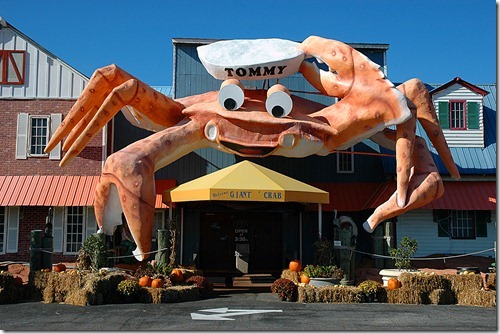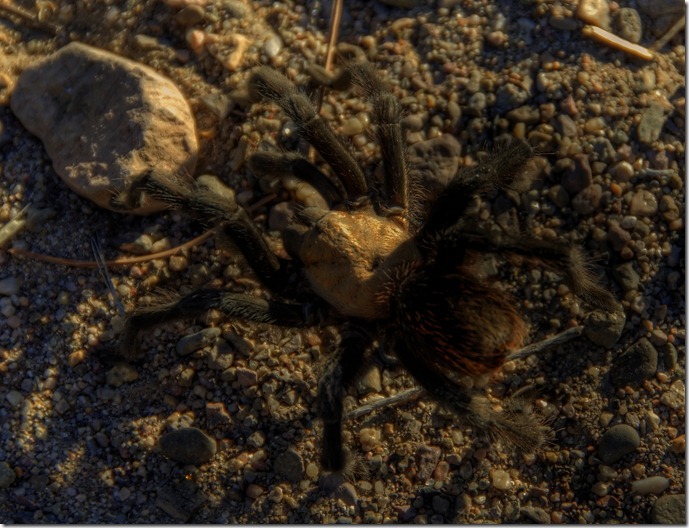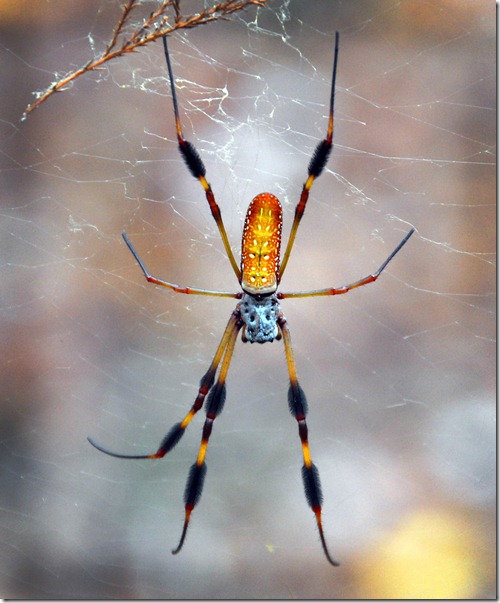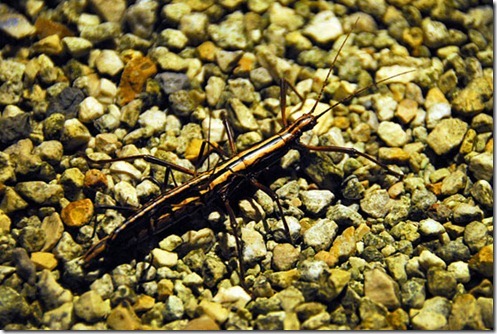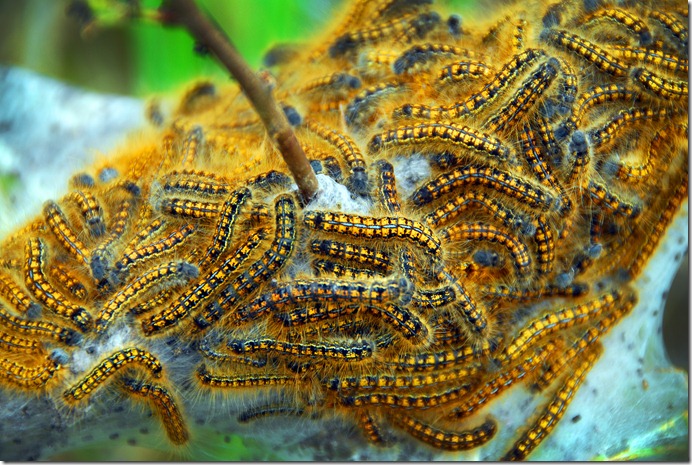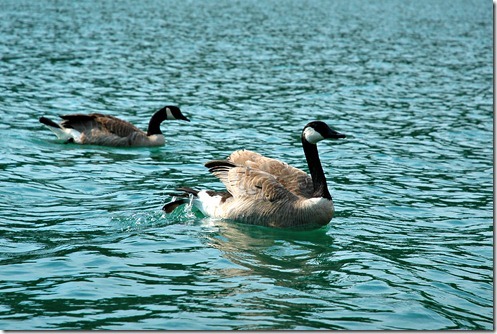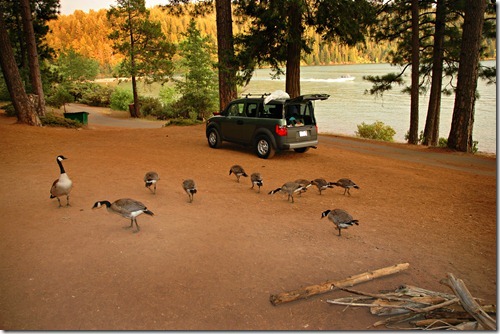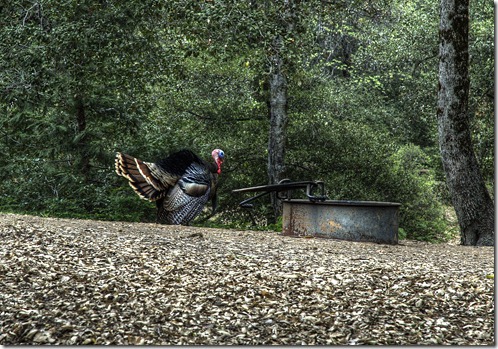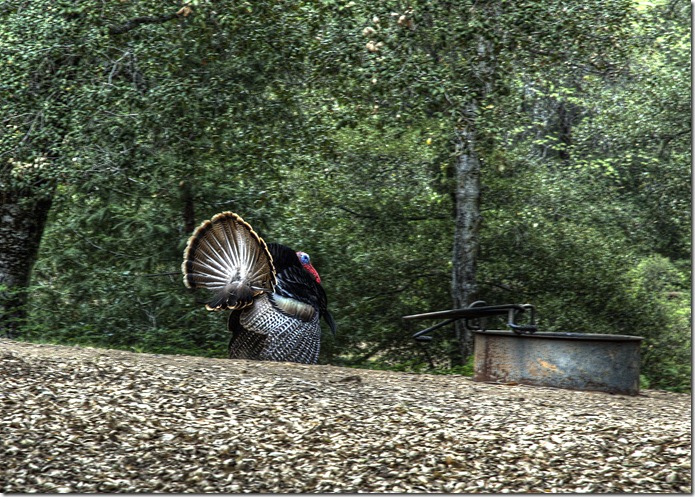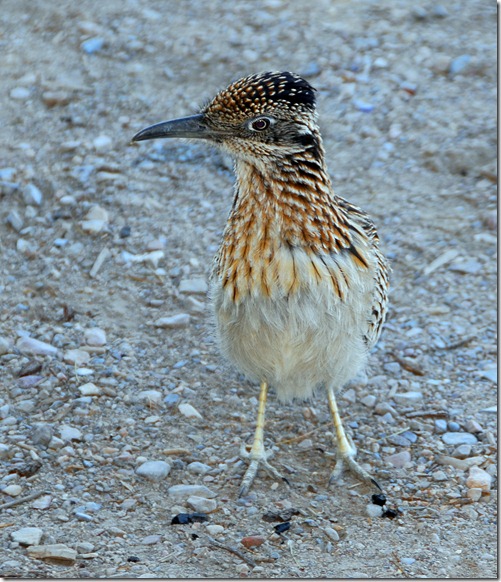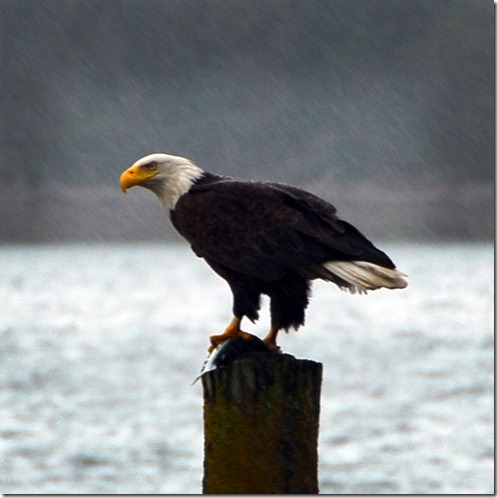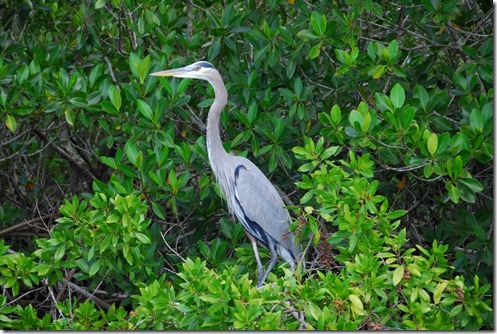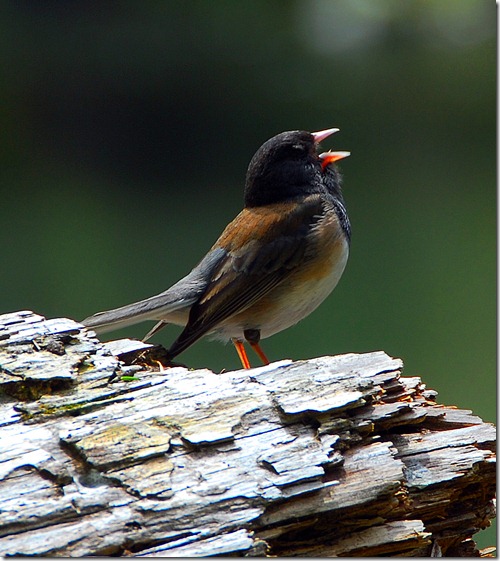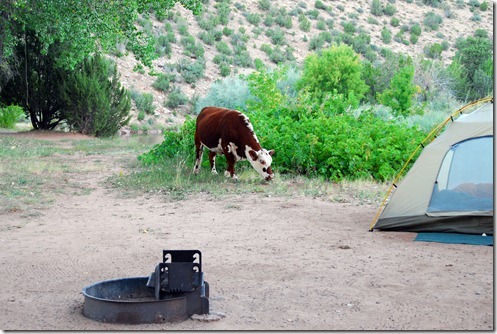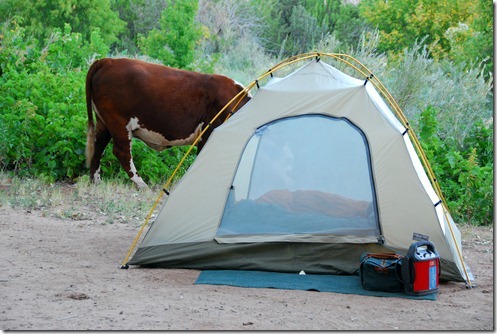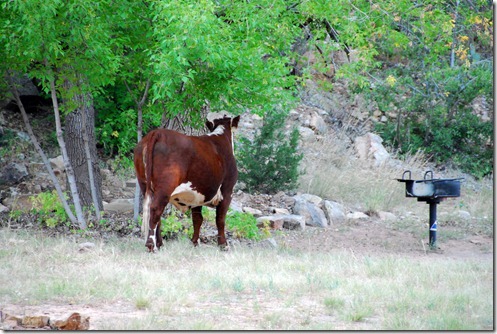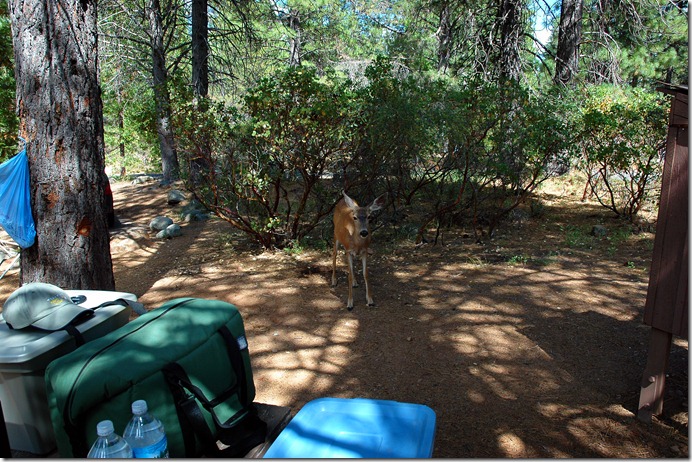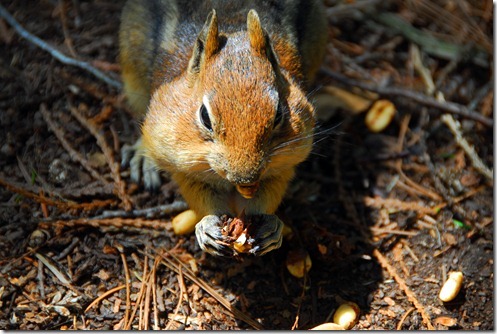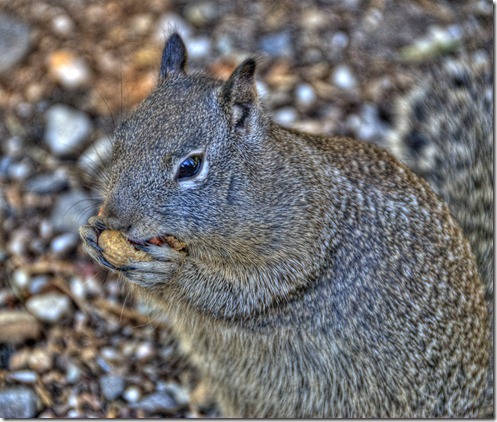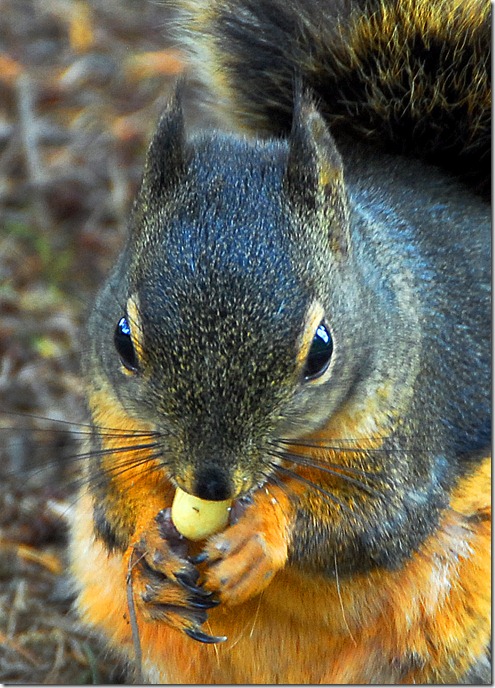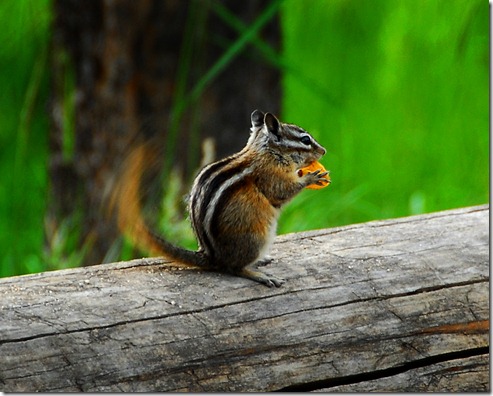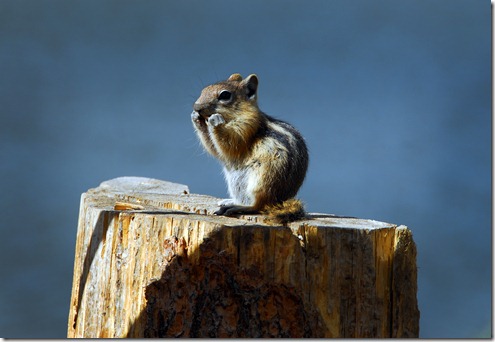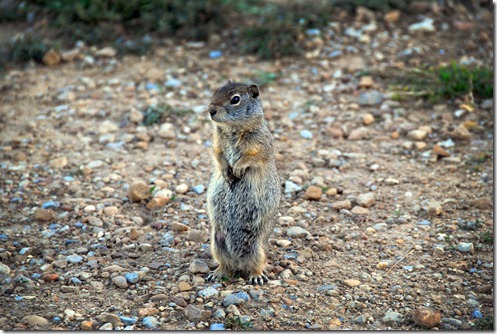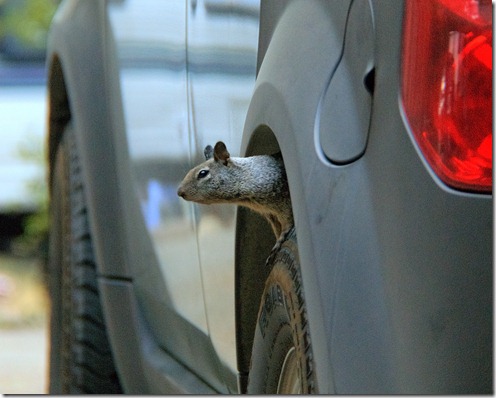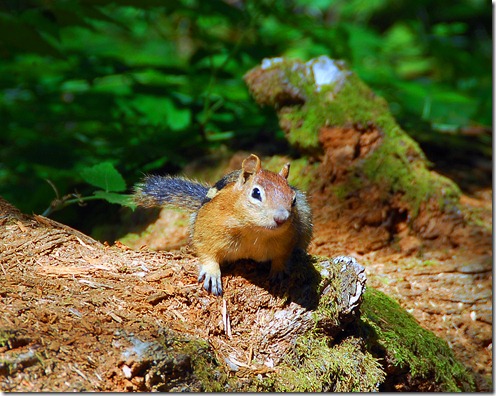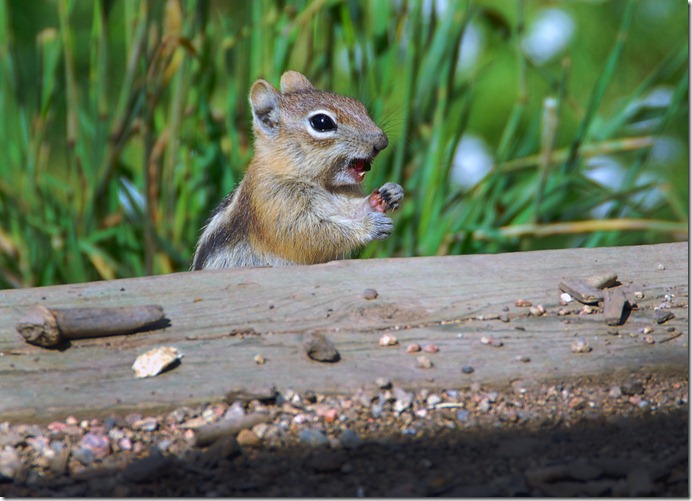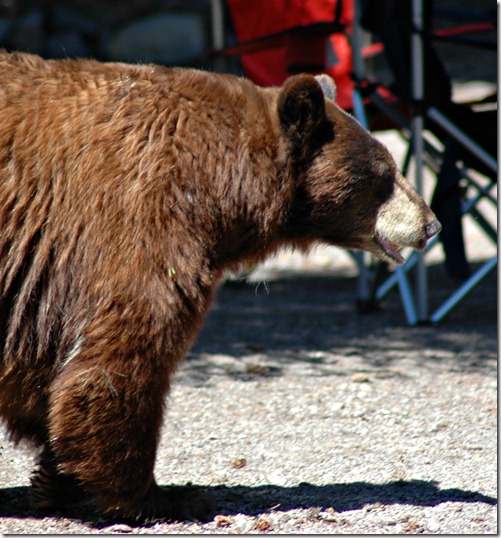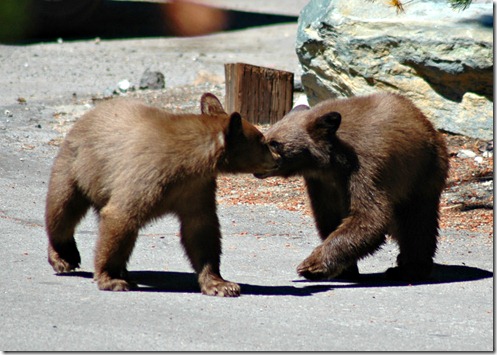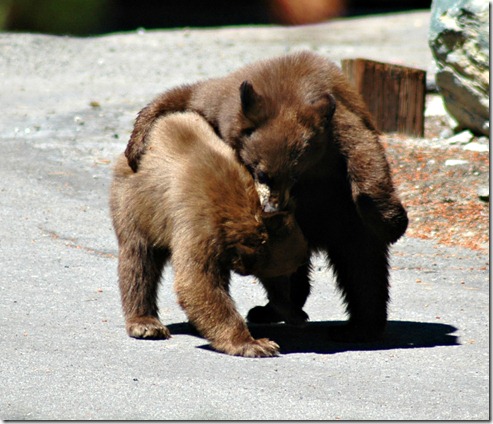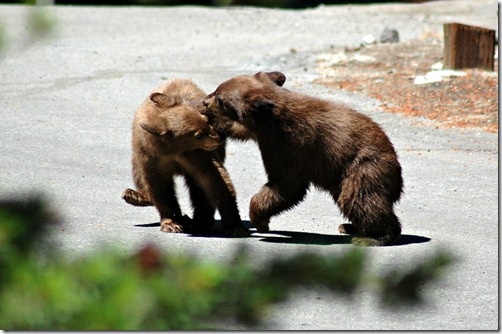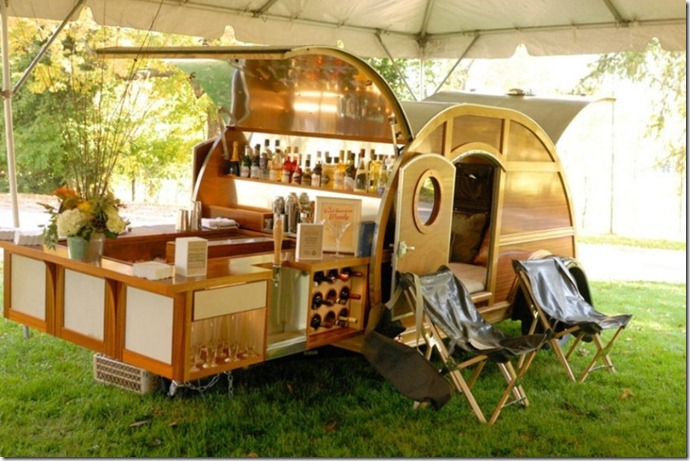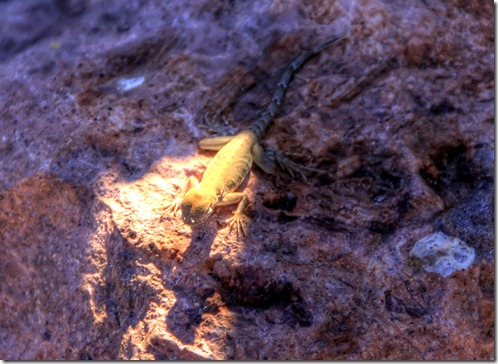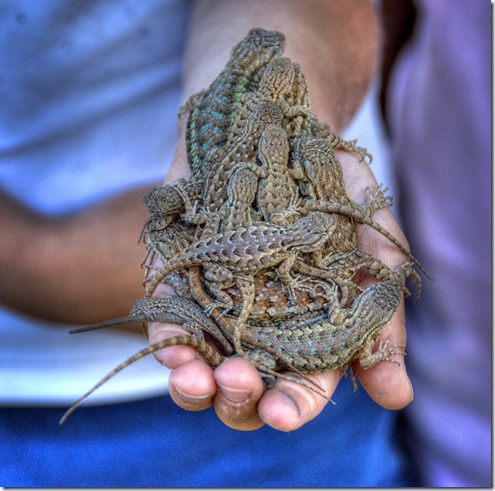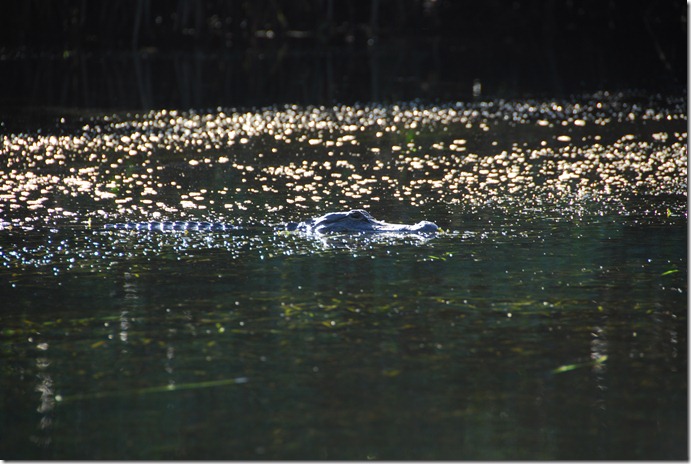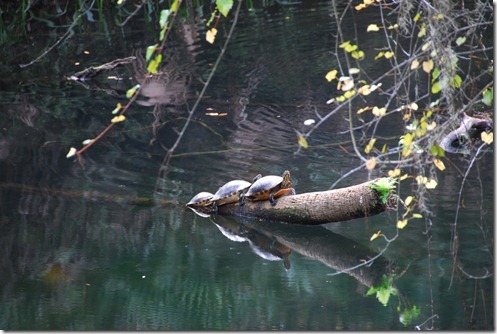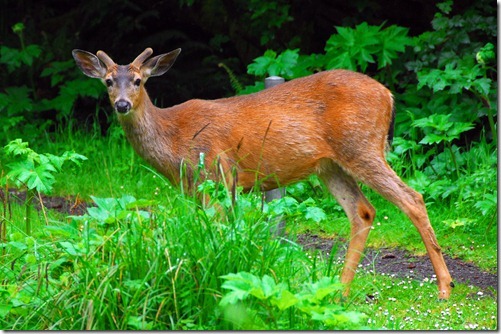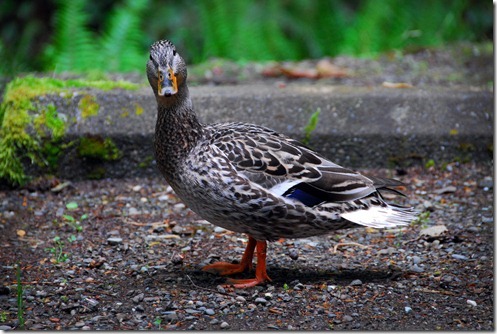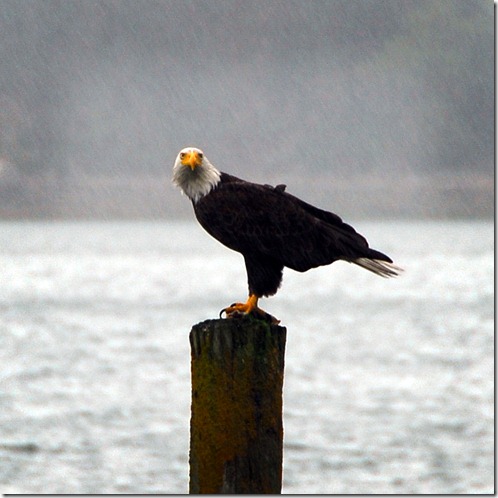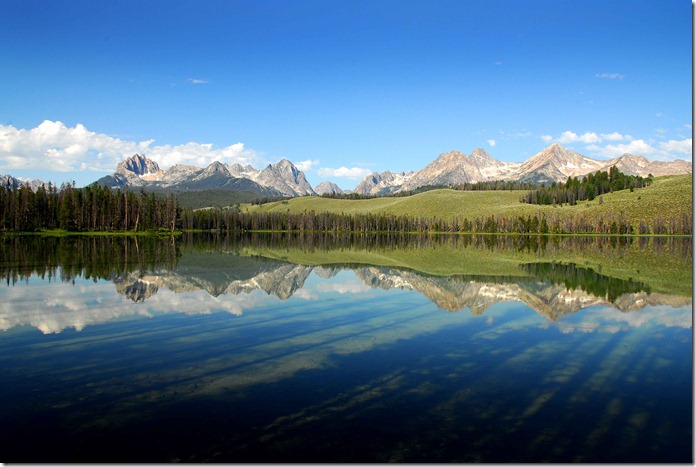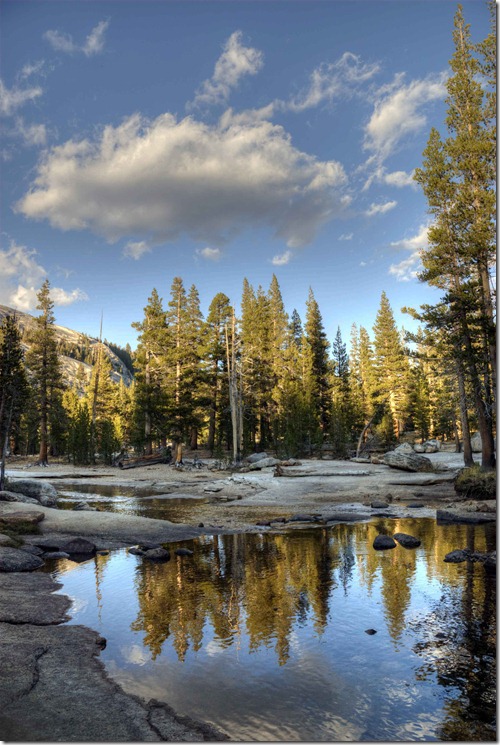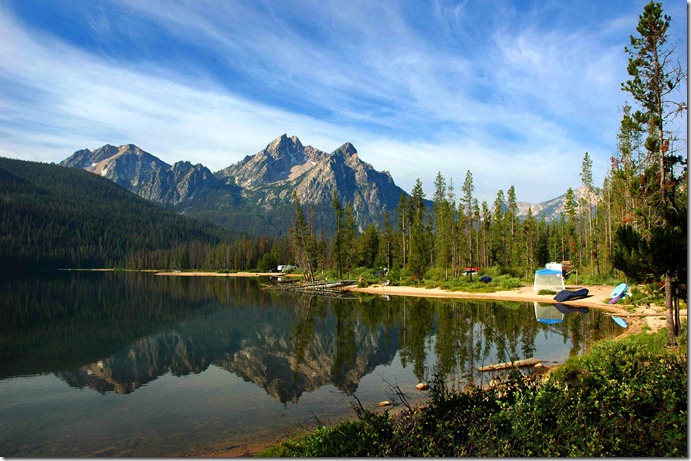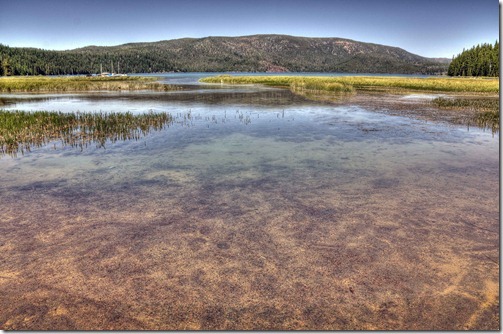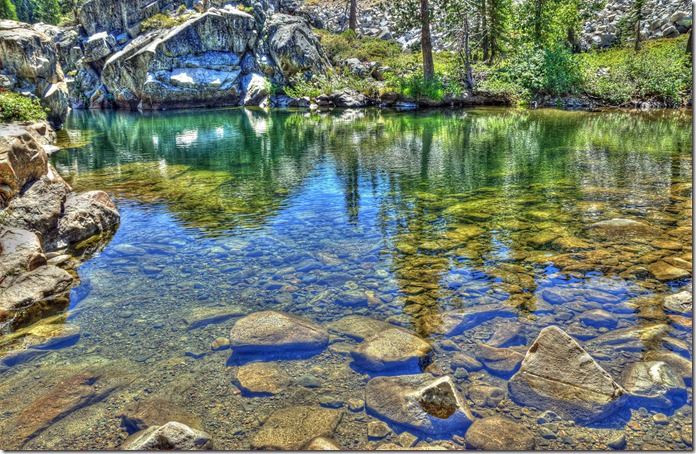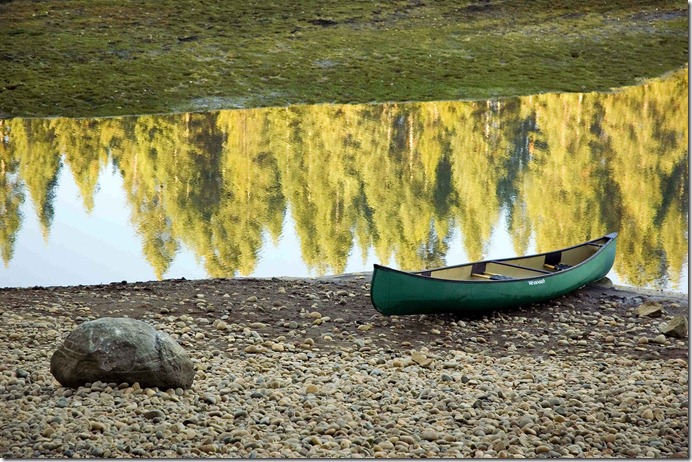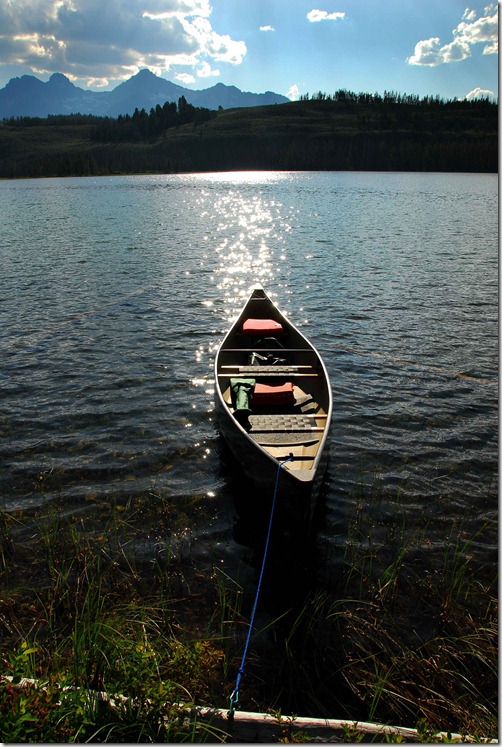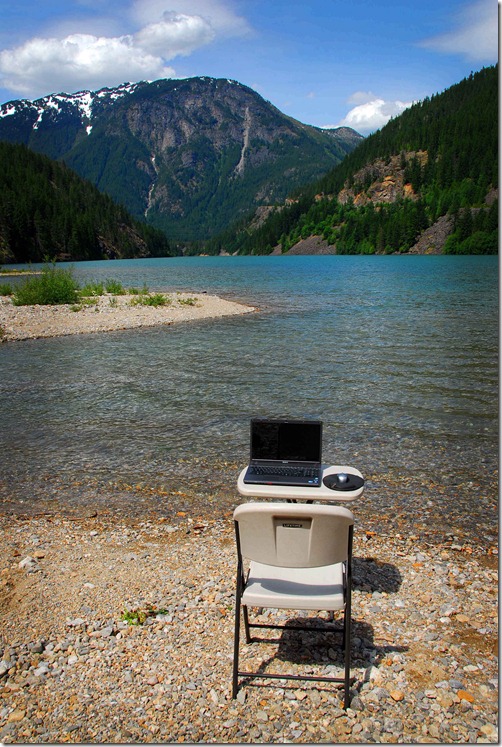And some bugs and birds as well.
This will be my last post until I hit the road in mid-March for 8 months. I thought I would share some photos of the “wildlife” I have encountered over the last few years.
Let’s start with bugs.
Biggest crab I have ever seen, and wearing a hat no less. OK, not really a bug but it looks like one. How about some spiders?
A Tarantula from New Mexico and a Cigarette-Butt spider from Florida.
Here is a stick bug thingy also from Florida and some caterpillars from Washington.
Canadian Geese seem to follow me wherever I go. I saw these two while canoeing and they invited their friends to visit my campsite at Jenkinson Lake in California.
I ran into a wild Turkey at Cuyamaca Rancho State Park in California.
I think this is how they say hello.
Or maybe not. It’s amazing how they can plump up their plumage.
I also get ignored by birds.
Or maybe that is their photogenic side. A cheeky little Chickadee serenaded me in Olympic National Park.
Villanueva State Park in New Mexico is a nice spot alongside the Pecos River. Just don’t go there when cows have booked the group site.
They think that they have a free run throughout the campground.
And they will make your kids wait to use the playground.
I had to push several down the slide just to get my turn.
Deer are plentiful wherever I go but this one loved the smell of my tacos and stopped by to ask for one near Mount Shasta in California.
I never knew they scratched themselves likes dogs.
Tree Rats are everywhere as well. They will sneak up and grab your snacks if you do not pay attention.
They also send out scouts…
And will yell to try to scare you away.
I don’t have a lot of bear photos but I did run across these ones at Lake Mary in Mammoth Lakes, California.
Mom was keeping an eye out.
While the kids played.
I expect to have more bear photos after I visit Yellowstone this year. Big bears. Grizzlies. Yippee! They have wolves there too. Luckily I will have a hard sided trailer to camp in during my time there.
Well, it kinda looks like that. Minus most of that.
I have also seen some lizards. Some small…
And some big.
And the occasional turtles, like these ones from Hillsborough River State Park in Florida.
One thing you may have noticed in most of these photos is the lack of eye contact with the subject. So I will add a little photo tip to end this post.
EYE CONTACT
You have your subject composed in your viewfinder. Maybe a once in a lifetime shot. Take that shot. Then try to get eye contact. Whistle. Most animals will turn their head to check you out.
Just don’t do that with bears.
Regards,
Greg
